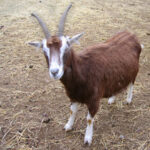Your cup of coffee with creamer in it can do it. The milk in your daily morning bowl of cereal. Lactose is found in milk based products galore. Lactose is also hidden in products that you may not considerer to be dairy products. Cake, brownies, any sweets containing chocolate are likely to contain lactose or a form of it such as lactic acid.
Sweets are not the only foods that lactose can disguise itself in. Many boxed dinner meals and side dishes at the grocery store are brimming with ingredients that can send a persons digestive system into an uproar if they are either lactose intolerant, or have a milk allergy.
Lactose intolerance is the name for a condition describing the fact that your body does not want to tolerate lactose. Milk allergy is a condition that causes your body to have an allergic response to any lactose that enters it. These are two separate conditions that have the same symptoms.
The symptoms come abruptly after eating something that contains lactose, or a form of it. You’ll be fine, having no symptoms at all. Then you’ll eat or drink something containing lactose. After consuming the food or drink symptoms begin to appear. The onset of symptoms generally includes stomach cramps and a feeling of being very warm. The stomach cramps can be mild to severe depending on how much lactose you’ve consumed. Some people may shake and feel a sense of just being ill. Many have diarrhea within an hour after consuming the food or drink and may also vomit. Hives may be result in both cases of food allergies, and of food intolerances. Hives would look like raised, red, round, blotchy spots on your skin. If you have them you can’t miss them! If you experience hives call your doctor immediately as they can cause and/or lead to anaphylactic shock in some cases if not promptly treated.
The symptoms can last for hours after eating or drinking the offensive product. An evening meal containing too much lactose can make a person ill all night long.
The only surefire way to prevent lactose allergy or intolerance symptoms is to avoid lactose. This is a tricky thing to do and involves careful reading of all product labels. Read before you buy. Many of the food containing lactose are foods we love and have always loved. Just don’t buy them. If you check the labels at the store for ingredients such as lactose, and lactic acid you can prevent bringing the offenders into your home. Remember, parents who have symptoms may also have children who will also have symptoms. Search out foods that are lactose free for yourself, and also to prevent symptoms in those you love.
People who suffer from lactose allergy or intolerance benefit from a diet that is full of foods from all of the other food groups. Fruits, vegetables, breads, meats, poultry, proteins, and such are all a great way to stay healthy and avoid lactose altogether.
One last thing to remember…A daily vitamin is very important because your body needs calcium and vitamin D for many reasons! When you avoid dairy products there are certain things your body is not receiving that it needs. A vitamin, once a day, will provide you with many if not all of the vitamins and minerals your body needs! Take care and thanks for reading J



